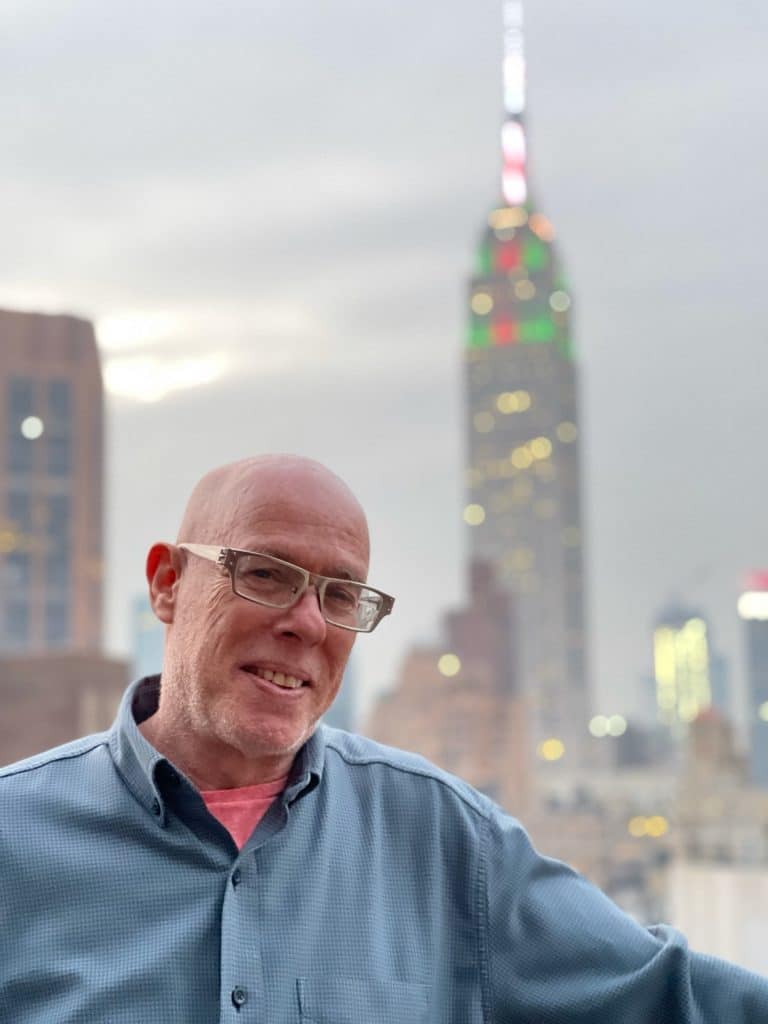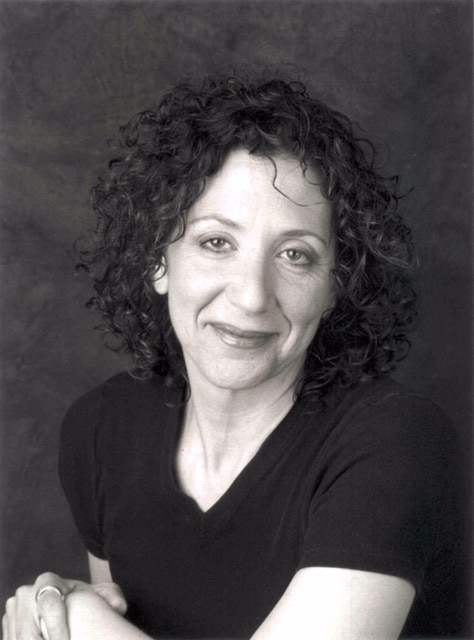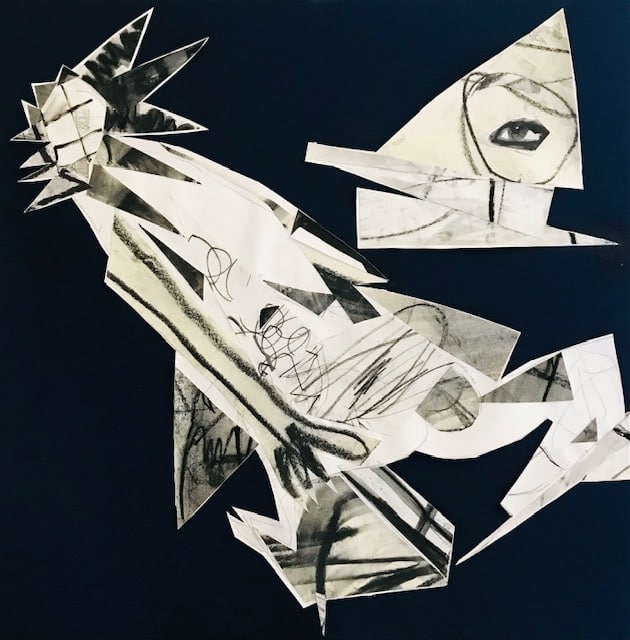Homage Series: Future Indicative by Laura Shabott, (2024, charcoal drawing collage and Flashe on canvas).
Photo: Courtesy of Berta Walker Gallery.
by Steve Desroches
In the 1970s artist Lee Krasner and playwright Tennessee Williams both blew up their respective careers. At this point they were living legends in their fields, almost god-like really. Awards and adulations accumulated, but all of that does little to satiate the constant restlessness of the soul of an artist. Establishments by nature can be calcified and conservative, counter to reacting to change, never mind getting out ahead of it. No one gets good without taking risks, and no one stays a master of their craft without continuing to take chances. So when later in life Krasner and Williams found themselves seeking new answers to old questions, the two, who had met in Provincetown 30 years prior, each individually looked backward to better understand the future, or more accurately, create the future.
As part of Forum 24, a celebration of the anniversary of Forum 49, a season-long event in Provincetown in 1949 that explored the emergence of modern art, David Kaplan, curator and co-founder of the Provincetown Tennessee Williams Theater Festival, conceived Lee and Tennessee, a performance piece that will be presented at the Fine Arts Work Center (FAWC) this Saturday evening. In it, artist Laura Shabott will play Krasner, creating an original work throughout, and actors John Dennis Anderson and Luke Bosco read passages from the works of Williams. Specifically, Shabott will be creating a collage, a medium Krasner explored in the 1970s as she took scissors to old works of hers for material. And the actors, who will appear in Something Cloudy, Something Clear, a play based on one Williams wrote and set in Provincetown in the 1940s, at this year’s festival, represent Williams on revisiting his prior works. As Kaplan points out, Krasner and Williams no longer looked at life the same way as they had when they were young, and fused the past and present together to create new perspectives.

“Memories are not an accurate account of what happened,” says Kaplan. “What you remember is an assemblage of pieces of what happened.”
This piece, presented in partnership with Forum 24, FAWC, and the Berta Walker Gallery, is a bit of a teaser to this year’s Tennessee Williams Festival, to take place from September 26 to 29 with the theme “Memory Plays.” Lee and Tennessee, which will only be performed once, represents not just how Krasner and Williams dealt artistically with memory and the perspectives that come with aging, but also as an acknowledgement of their relationship. Krasner came to Provincetown in the 1930s to study under Hans Hofmann, while Williams came in 1940 to write, and unbeknownst to him, fall in love. Kaplan explains that Williams did not hang out with “theater people” while in Provincetown, but rather circulated in the orbit of Hofmann’s summer art school. Krasner, and her husband Jackson Pollock, introduced Williams to a revolutionary art movement, that would influence him for the rest of his life, and thus later in life Krasner and Williams would still exist in the same ether.
“One of the similarities between Williams and the [Abstract Expressionist] artists was the maturing of their exalted private visions of the world into revelatory mythologies they intended to evoke with their work,” Kaplan writes in his 2007 book Tennessee Williams in Provincetown. “In February 1976, Lee Krasner, who had by this time survived Jackson Pollock’s death by twenty years, took out the figure and still-life drawings she’d drawn in charcoal almost forty years [1936] before in her classes with Hans Hofmann. With a scissor, Krasner cut her old drawings into triangular shreds…She took the three-sided shards and assembled them into collages, eleven of them, calling the series Eleven Ways to Use the Words to See, creating titles such as Imperfect, Indicative, Present Subjunctive, Imperative.’ This form of wordplay in visual form complements Williams’ similar approach to revise the earlier visions of his 1940 text, The Parade, into his 1980 text Something Cloudy, Something Clear.”

Quite literally cutting up the old days seemed like a cathartic exercise for Krasner and Williams. It is true that both were rather financially secure come the 1970s, allowing them some breathing room to follow passion over the practical. But the time period in which they created the original works in was a difficult time. Krasner’s own career was often overshadowed by her husband’s with the added challenges of his infidelity and alcoholism. It wasn’t until after his death from a drunk driving accident in 1956 that she was regarded for her own work, moving out of the small bedroom she worked in to Pollock’s spacious studio. For Williams, the summer of 1940 would be pivotal as he fell deeply, hopelessly, and breathlessly in love while living at Captain Jack’s Wharf with Kip Kiernan, a dancer from Canada who’d come to Provincetown evading the draft in his home country, a love affair that would end in heartbreak. This confluence of complicated relationships became a central moment in the friendship between Krasner and Williams.
“When Kip dumped Williams he was on a picnic with Lee and Pollock in the dunes,” says Kaplan. “Williams was riding on the handle bars of Kip’s bike when he told him that he wasn’t queer and that it had to end. Talk about balancing everything.”
Lee and Tennessee will be presented at the Fine Arts Work Center, 24 Pearl St., on Saturday, September 14 at 4 p.m. Tickets ($20) are available at provincetownartgalleryassociation.org.











